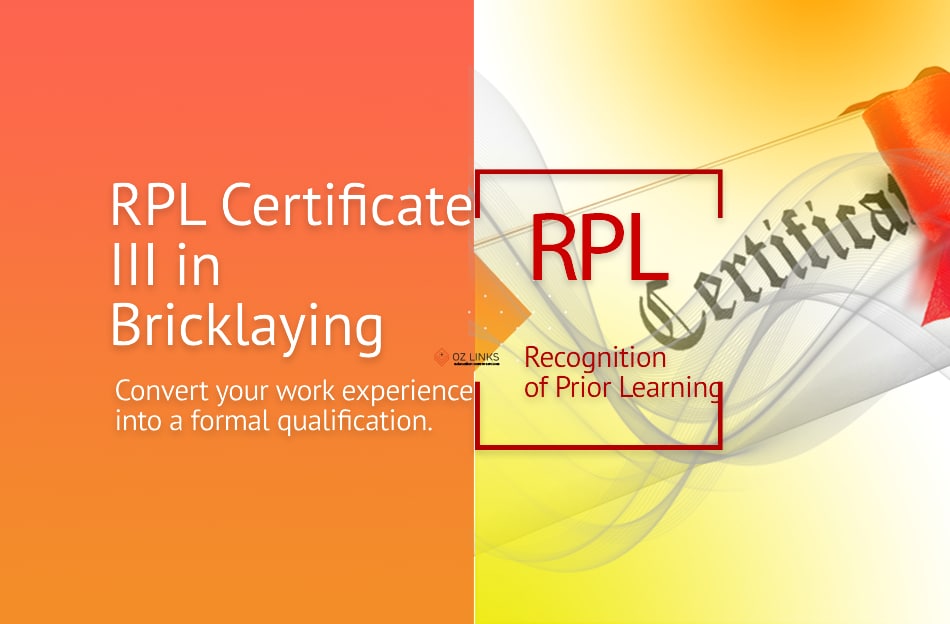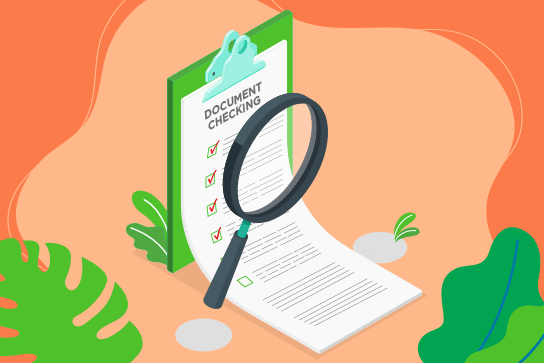Last Updated on April 8, 2025 by Ozlinks Education
Have you been working as a bricklayer, blocklayer, paver but haven’t yet obtained your qualification? You’re in the right place. The Recognition of Prior Learning (RPL) program offers a pathway to help you convert your skills and work experience into a formal Certificate III in Bricklaying and Blocklaying, which is provided through our Registered Training Organisation partners.
Certificate III in Bricklaying and Blocklaying Overview
To achieve this qualification, competency must be demonstrated in 28 units of competency must be completed:
- 20 core units
- 8 elective units
Job title:
- Blocklayer
- Bricklayer
- Paver
Why do I need the Certificate III in Concreting?
If you have been working as a concreter but have not yet obtained your qualification for any reason, pursuing an RPL (Recognition of Prior Learning) program for this certification can greatly enhance your career in the building construction industry. This pathway enables you to gain recognition for your existing skills and experience, allowing you to achieve formal qualifications without the need for extensive retraining. Leveraging your practical knowledge can streamline the certification process, potentially leading to higher-paying positions or specialised roles within the industry. Additionally, obtaining this qualification can boost your confidence and credibility among clients and employers alike.
Overseas students and migrants may require this certificate for their migration skills assessment if they intend to apply for the DAMA visa as a concreter. This certificate serves as proof of their qualifications and experience in the field, ensuring that they meet the necessary standards set by the relevant authorities.
Ozlinks Education can help you to convert your skills and work experience into a formal Certificate III in Concreting through the Recognition of Prior Learning (RPL) program offered by one of our Registered Training Organisation (RTO) partners. Our expert team will evaluate your individual circumstances and provide tailored support to ensure you achieve the qualifications necessary to advance your career.

What does a concreter do?
A concreter pours, spreads, smooths and finishes concrete and installs reinforcements to strengthen concrete for structures such as floors, stairs, ramps, footpaths and bridges. Registration or licensing may be required.
Their job involves:
- Studies plans and specifications to determine materials required, dimensions and installation procedures
- Erects and dismantles restricted height scaffolding
- Seals foundations with damp-resistant materials and spreads layers of mortar to serve as base and binder for building blocks
- Cuts building blocks using machines and hand tools, and shapes blocks to fit irregular spaces
- Sets out blockwork and lays building blocks in rows, designs and shapes
- Embeds building blocks in mortar ensuring construction is level, plumb and aligned, and removes excess mortar
- Installs lintels and flashings to openings
- Repairs and maintains bricks, cement blocks and related structures
- May prepare base and bedding courses, and lay segmental paving
What is Recognition of Prior Learning?
The Australian Qualification Framework (AQF), which is governed by the Australian Government’s Department of Education in consultation with the states and territories, gives all students the right to have their prior education, relevant work experience, and training acknowledged to facilitate their advancement towards and between qualifications. Every registered training organisation (RTO) has its own policies and procedures for determining your RPL eligibility, but the fundamentals are the same. The experience and skills you’ve gained through your work can help you complete a qualification faster and reduce the time commitment of taking a course to get you closer to your dream job.
Recognition of Prior Learning (RPL) program offer numerous benefits, including time and cost savings by validating existing skills and experience, expedited qualification achievement, and improved employment prospects. RPL program helps you:
- There is no need to relearn what you already know.
- It saves both your time and tuition fees.
- Assist you in achieving your career change objectives in Australia.
- Gaining an Australian qualification requires less time.
- You do not need to attend classes or redo the training you have already completed.
- Open new career opportunities in the building industry.
- Obtain a qualification to satisfy the visa or skills assessment requirements.
Evidence requirements
Below is the general list of documents that you are required to provide to support your RPL assessment application:
- 100 points of identification documents (ID)
- A current resume/cv outlines your relevant employment
- Student USI number
- A white card or any other relevant license
- Employment evidence, including an employment reference letter, employment contract, payslips, income statement, and superannuation.
- Workplace photos and videos that showcase you performing your tasks in accordance with the job duties outlined above demonstrate your competency in the relevant qualification.
Note: Additional gap training may be required to address any areas needing improvement and to ensure a positive assessment outcome. An RTO assessor may conduct a competency interview with you to identify any existing training gaps related to this Certificate III in Bricklaying and Blocklaying.



